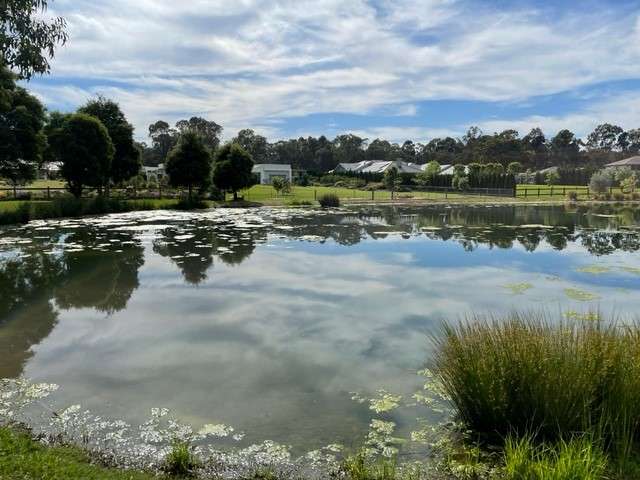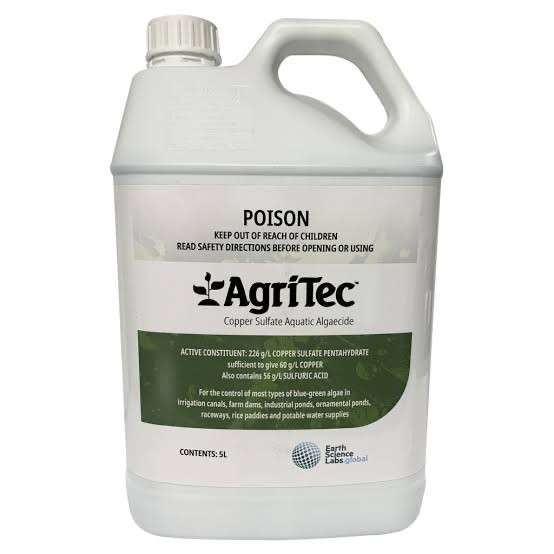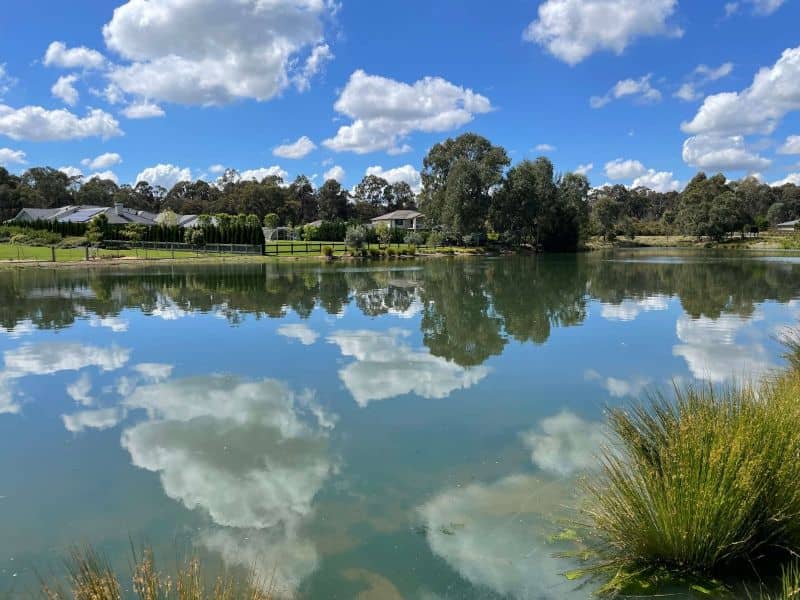Managing Blue Green Algal Blooms.
A case study into managing blue-green algae blooms in water bodies. How to control blue green algae blooms with Agri-Tec, a proprietary formulation of copper pentahydrate.
Twin Creeks G.C. Course Manager, Darren Turner called Gilba Solutions in 2021 with a water quality issue with his dams. There was an algal body on the water body of a dam. His concern was that it may be a blue green algae bloom.
After a site visit there was a strong possibility that it was blue-green algae in water and water quality testing confirmed this.
What Is Blue Green Algae.
Algae and blue-green algae, a bacteria called cyanobacteria, are plant-like organisms that live in water. They can quickly form “algae blooms” in surface water and grow out of control.
When an algal bloom occurs, the water becomes murky and may look green to blue-green in colour. You may see scum along the sides of dams when the bloom rises to the water surface. They can also grow in the water column below the surface water, and this can make some algal blooms hard to see.
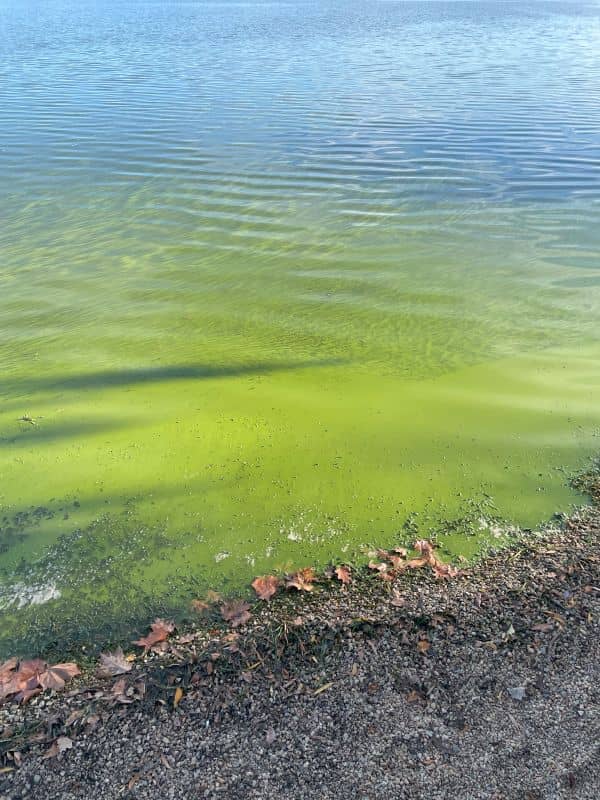
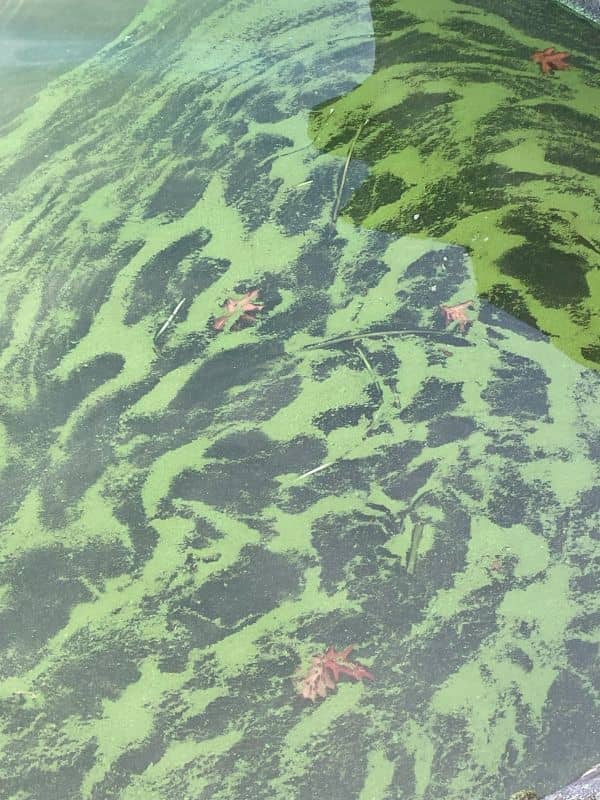
The blooms may last for a few days to several weeks, and last until conditions in the water body change. When this happens the algae tend to die and decompose.
Some species of blue green algae produce harmful toxins. Conditions that favour ‘toxic blooms’ include sunlight, still or slow-flowing water and high nutrient levels of nitrogen and phosphorus.
What Causes A Blue-Green Algal Bloom?
Several factors favour the growth of blue-green algae:
- High nutrient pollution of Nitrogen and Phosphorus.
- High water temperature and sunlight. The optimum temperature for many algal species is around 35°C.
- Still or slow-flowing water.
Under still conditions, there can be an increase in cyanobacteria which forms visible ‘algal blooms’. These blooms lead to poor water quality and possible toxicity.
Nutrients are either present in sediments or are washed into water bodies. In particular, Phosphorus is present in large amounts in sediments and releases due to bacterial activity.
On a golf course, fertiliser is the main source of Nitrogen and Phosphorus. An effective management strategy for these is to use slow-release fertilisers. Even household products, sewage effluent and stormwater runoff can be an issue.
Twin Creeks Golf and Country Club is in the beautiful surrounds of Nepean Valley and Australian Golf Digest ranked it number 93 in 2021. It hosted the NSW Open from 2017-2019.
A Management Strategy For Blue Green Algae.
Due to the sensitivity of the area control of blue green algae had to have minimal impact on the environment. After looking at several options, a decision as made to treat the dams with Agri-Tec, a formulation of copper pentahydrate.
The reasons for this were:
- Ease of use. You pour Agritec into a dam and it self-disperses.
- It has low rates of use.
- It is not toxic to fish.
- You can safely use the treated water to irrigate turfgrass.
The Result with Agritec.
Within 3 days you could see the blue green algae bloom was affected, and complete control was seen in a week.
Agri-Tec Overview
Agri-tec is a proprietary copper formulation for the control of algae including all species of blue-green algae in water.
Agri-Tec® is a unique copper-based aquatic algaecide and is for the control of a number of algae species including Chara and Phormidium species. You can use Agritec® in farm dams and ponds, irrigation canals, lakes, and potable water supplies.
Key Features of Agri-Tec:
- You can apply Agri-Tec directly to water bodies.
- It is easy to measure out and use.
- Agri-Tec has very low use rates.
- It works where the algae growth is the greatest.
- Works at high water pH.
- You can use treated water for irrigation.
- It is non-toxic to fish.
- Here are the Agri-Tec Label and Agri-Tec MSDS.
For aquatic Weed Control use Clipper Aquatic Herbicide.

Jerry Spencer
Jerry has an Hons Degree in Soil Science (1988) from Newcastle Upon Tyne University. He then worked as a turf agronomist for the Sports Turf Research Institute (STRI) until 1993.
He gained a Grad Dip in Business Management from UTS in 1999. He has held a number of technical roles for companies such as Arthur Yates (Commercial Technical Manager) and Paton Fertilizers (Organic, turf specialty and controlled release fertiliser) portfolios.
In 2013 he established Gilba Solutions as independent sports turf consultants and turf agronomists. Jerry has written over 100 articles and two books on a wide range of topics such as Turf Pesticides and turfgrass Nutrition which have been published in Australia and overseas.

